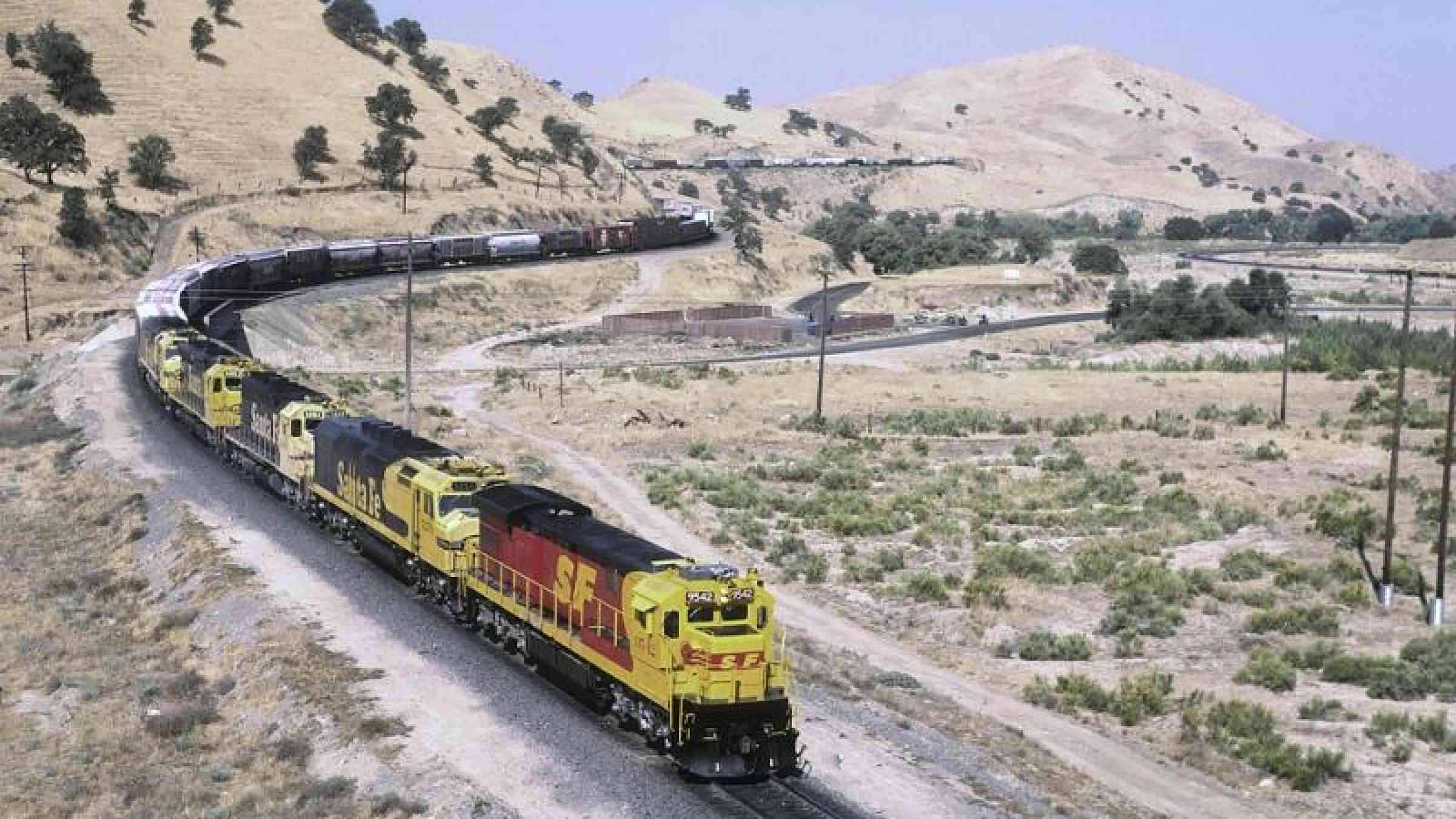
Early signs of hazardous earthquake activity across Southern California can be detected using the passage of freight trains, which produce surprisingly strong seismic signals. That is the claim of researchers in France, Belgium and the US, who have demonstrated the detection principle on the dangerous San Jacinto Fault. The team has also calculated that the same approach could be used to monitor almost the entirely of California’s San Andreas Fault.
[...]
Now, [Florent] Brenguier [a seismologist at the Université Grenoble Alpes] and colleagues may have found a way to repeatedly and economically probe the crust by using railway traffic an existing seismic source. Freight trains have already been recognized as a source of seismic noise, which is generated as the heavy trains push down on the ground over which they run. It had been thought that their seismic signals would only be strong enough to probe the shallow surface, until a study last year by Asaf Inbal and colleagues reported the detection of clear seismic signals from freight trains tens of kilometres from the railway line itself. This suggests that the trains radiate a relatively high level of seismic energy.
In their new study, Brenguier and colleagues calculated that the seismic noise generated by the passage of freight train traffic running across Southern California each day is equivalent to a magnitude 2.2 earthquake. This is enough to penetrate the crust to a few kilometres depth—and should be detectable tens of kilometres from the railway.
[...]
“A large earthquake on the San Jacinto fault could cause major damage in several highly populated Southern California counties — with around five million inhabitants — located at distances of 15-150 km from the fault,” Brenguier explains. He adds, “The trifurcation zone of the San Jacinto Fault is one of the most seismically active areas in Southern California producing more than 10% of all earthquakes in this region”.
[...]